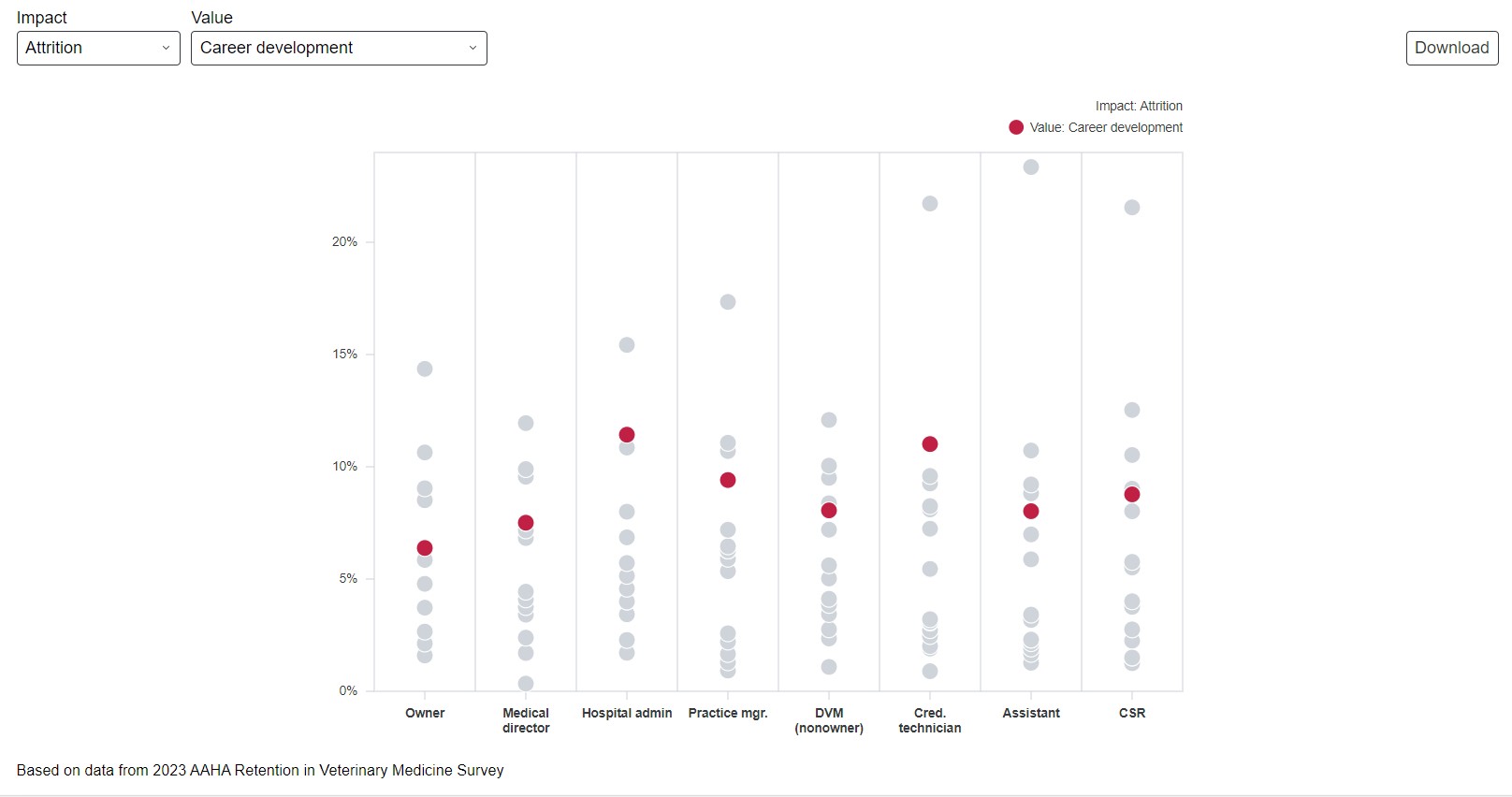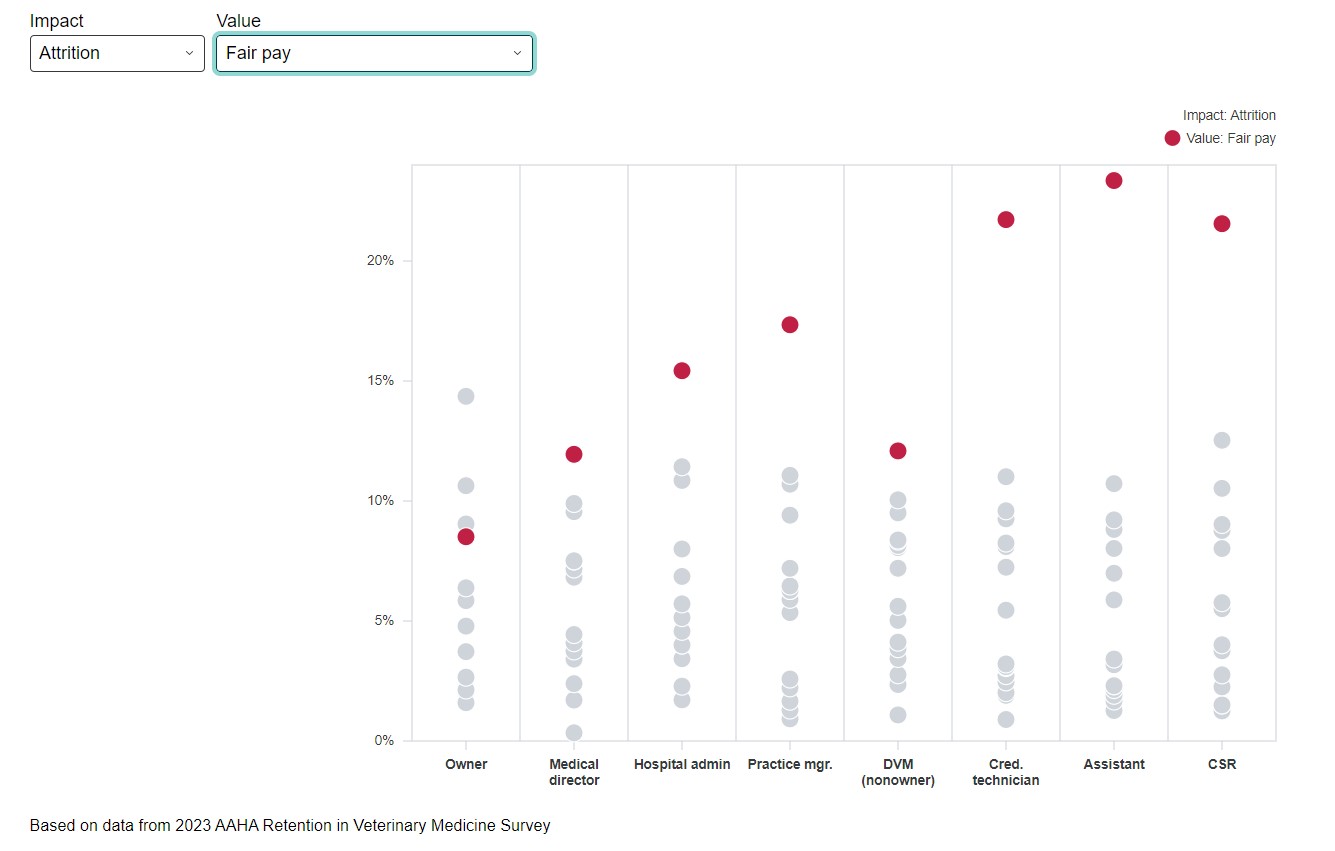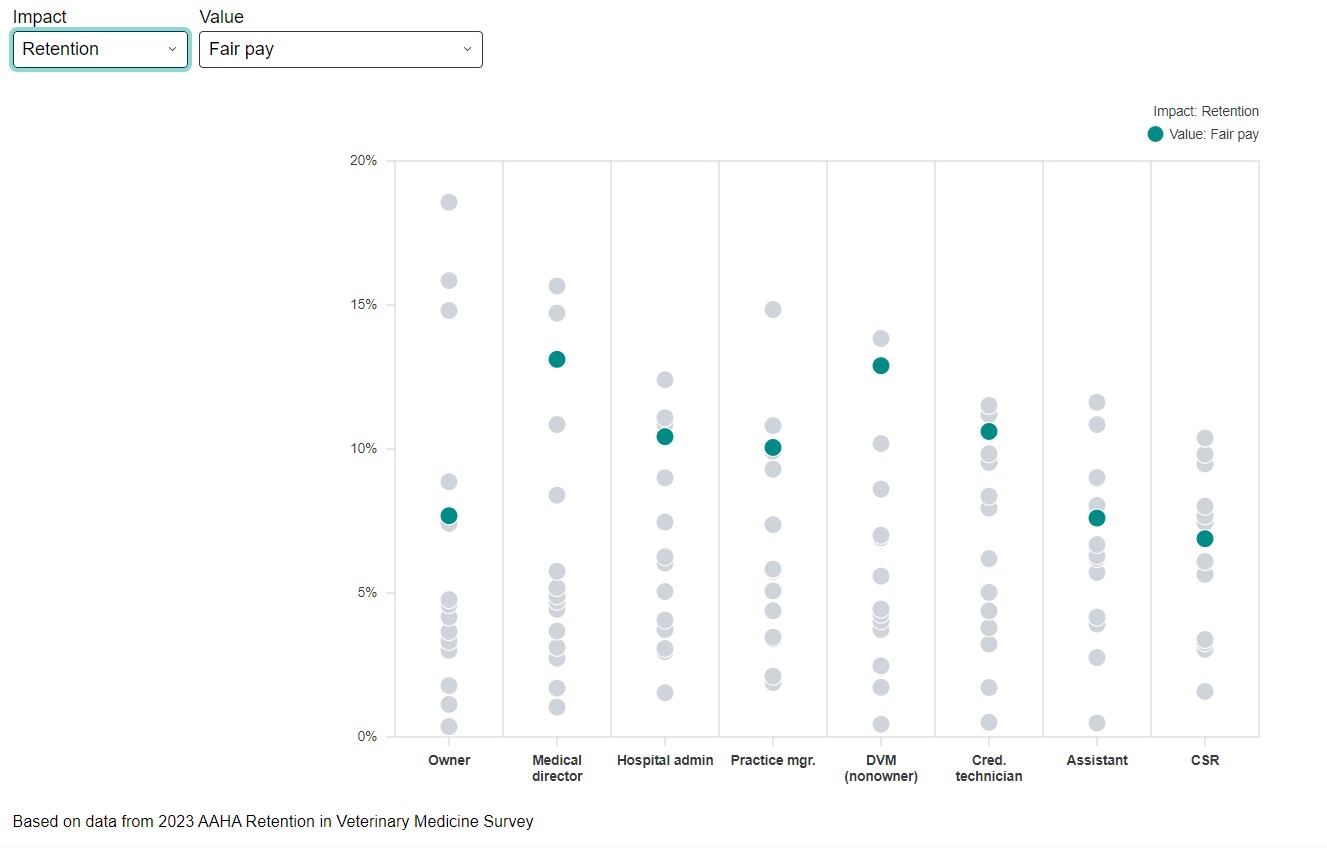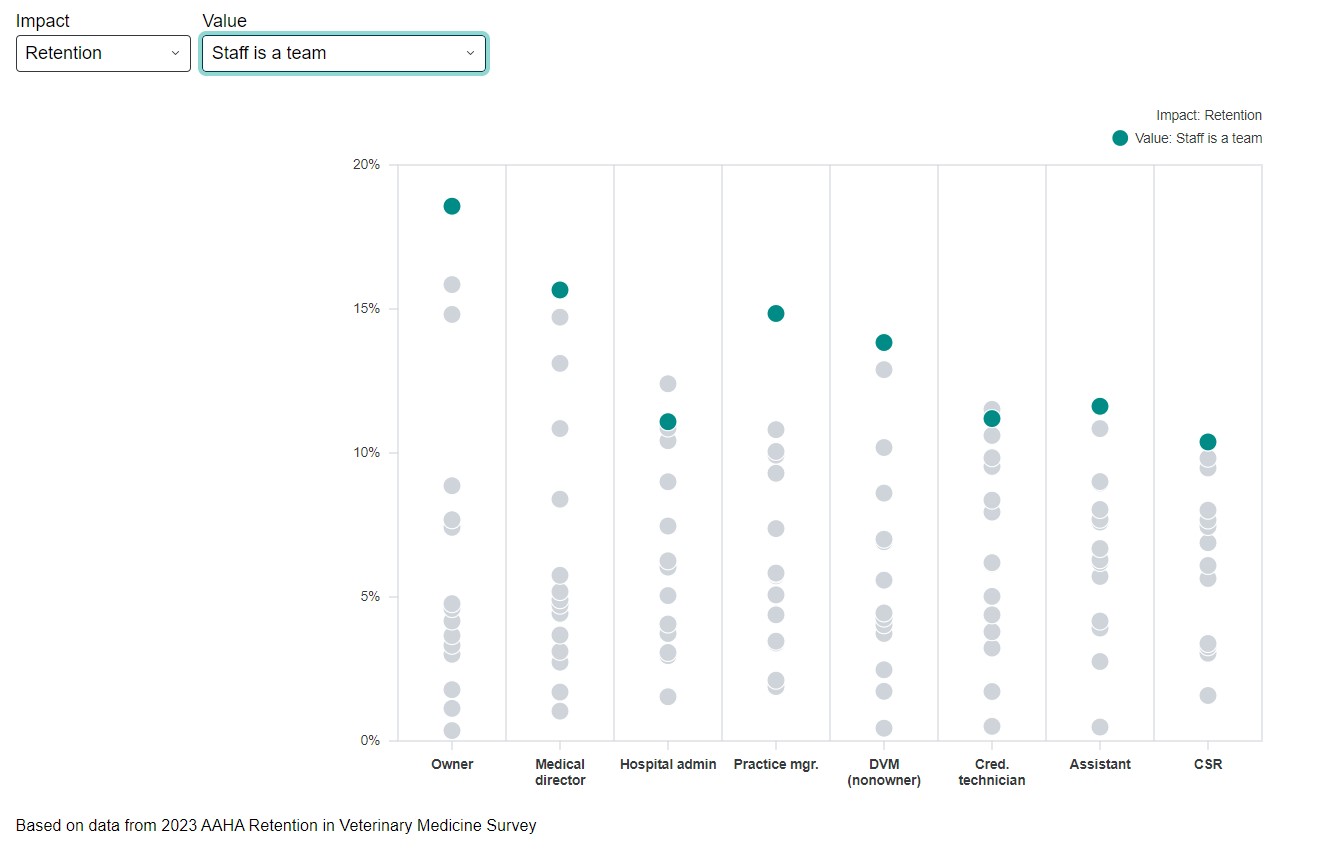Interactive graphics: Retention and attrition in vet med

Why people stay or go from vet med: A data visualization
At any given moment 30% or more of veterinary practice team members are considering leaving their current clinical practice, according to independent research by AAHA outlined in the free white paper “Stay, Please” (aaha.org/retention-study).
The issue of retention (why people stay) and attrition (why they leave) is far more complex than a workforce shortage. And as the white paper points out, it’s not a problem that will be solved by simply opening more veterinary schools.
Today’s practices need to keep the good people they have, which means they need to better understand the specific pain points of various roles and what might be done to keep them. To help visualize these factors, the white paper includes access to interactive data visualizations that show retention and attrition factors filtered by role.
For example, in the drop-down menu, you can see how much of an impact “opportunities for career development” have on attrition (why people leave their jobs in clinical practice) based on their job role, as shown here:
From this first graphic, we can see that the roles most likely to report dissatisfaction with career development as a reason for leaving a job are hospital administrators and credentialed veterinary technicians.

Select a different factor from the drop-down menu to see how other values compare, such as fair pay:

This chart reveals that fair pay is a highly important factor for all roles, but has the most meaning for credentialed techs, veterinary assistants, and customer service representatives (CSRs).
You can also change the filter to see what makes these people want to stay by selecting “Retention” for the impact:

When we switch the view from “what makes them want to leave” (attrition) to “what makes them want to stay” (retention), we can see that—despite its potential to drive them away, fair pay is actually less important as a retention factor for assistants and CSRs than it is for roles like medical directors and nonowner (associate) DVMs.
We can continue to gain insight by selecting different retention factors from the list. For example, the effect of the staff working well together as a team:

If the practice is having high turnover of customer service representatives (CSRs), this data helps to show that lack of fair pay is one of the major reasons that CSRs leave their jobs. However, working on a staff that feels like a team is actually more important to them than compensation in terms of why they want to stay.
Ready to keep exploring this data? Go to aaha.org/retention-study to download the free white paper “Stay, Please” and access the interactive graphics.
This article is part of our Stay, Please series, which focuses on providing resources (as identified in our Stay, Please retention study) to retain the 30% of all veterinary professionals considering leaving their clinical practice. Here at AAHA, we believe you were made for this work, and we’re committed to making clinical practice a sustainable career choice for every member of the team.
Cara Hopkins is AAHA’s Managing Editor.
Cover photo credit: © Morsa Images E+ via Getty Images Plus
Disclaimer: The views expressed, and topics discussed, in any NEWStat column or article are intended to inform, educate, or entertain, and do not represent an official position by the American Animal Hospital Association (AAHA) or its Board of Directors.
NEWStat Advancements & research News Interesting/unusual Practice management Retention Study



